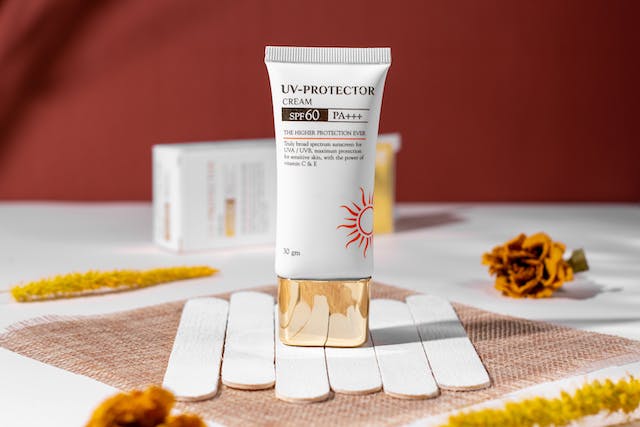Scar Management 101 Tips for Minimizing Scarring After Plastic Surgery

Minimizing scarring after plastic surgery is important to your journey toward healing and transformation. It’s not merely about the immediate aftermath of the procedure. Instead, it combines artful care and understanding your body’s unique healing process. This guide showcases practical and effective strategies to manage and reduce scars, ensuring your recovery aligns seamlessly with your envisioned aesthetic changes. Embracing this process as part of your transformation can lead to a more satisfying and confident outcome. So, let’s explore together the steps you can take to achieve the best possible healing experience and aesthetically pleasing results.
Tip 1: Importance of Psychological Counseling Before Surgery
Undergoing psychological counseling before surgery can significantly influence your post-operative experience, including scar management. Counseling provides a space to set realistic expectations, cope with anxieties, and mentally prepare for the changes. It helps understand the emotional aspect of your surgical journey, ensuring you are psychologically ready for the physical transformation.

Pre-surgery counseling can set a strong foundation for a smooth recovery and effective healing process.
This proactive step can be as important as the surgery, equipping you with coping strategies for post-surgery adjustments, including scarring. Remember, a holistic approach to plastic surgery, addressing both physical and mental preparedness, is key to a successful outcome and satisfactory healing process.
Tip 2: Selecting a Skilled Surgeon
Choosing a top-notch plastic surgeon is the cornerstone of minimizing scarring after plastic surgery. Their mastery of surgical techniques influences the healing process and eventual appearance of scars. A proficient surgeon ensures precise incisions and plans their placement, ideally along natural skin lines or less visible areas. This careful planning minimizes scar visibility.
Also, a surgeon’s skill in suturing affects how well the skin heals. Opt for a renowned surgeon for their finesse and attention to detail. Their adept hands can significantly reduce the likelihood of pronounced scarring, akin to an artist creating a masterpiece with minimal brushstrokes. Your trust in their expertise will be reflected in the quality of your healing.
Tip 3: Tips for Minimizing Scarring After Plastic Surgery: Nutritional Support for Healing
Your diet significantly impacts your body’s ability to heal post-surgery. Consuming foods rich in vitamins A and C, zinc, and protein supports skin repair and scar minimization. Vitamin A plays a big role in cell growth and immune function, while Vitamin C helps collagen formation. Zinc aids in tissue healing and keeps the immune system strong.

Eating a balanced diet rich in nutrients plays a key role in minimizing scarring after plastic surgery.
Lean proteins provide the amino acids necessary for tissue repair and regeneration. Hydration is equally important; drinking plenty of water helps keep the skin supple and may reduce scarring. Consider your diet a toolkit; the right nutrients can equip your body with everything it needs for optimal healing and reduced scarring.
Tip 4: Diligent Post-Surgery Care
Just as the careful and strategic approach of number1movers.ca ensures the safe and efficient transport of your belongings, a diligent post-surgery care routine is crucial for minimizing scarring after plastic surgery. This phase demands meticulous attention to your surgeon’s instructions, mirroring the precision and care a professional moving service applies to handling delicate items. Following guidelines on wound care, rest, and restricted activities is vital. Any deviation can adversely affect the healing process, like a single misstep in a moving plan, leading to complications.
Also, regularly attending follow-up appointments allows your surgeon to monitor your recovery and adjust care recommendations as needed. This period is an investment in your health, where every day of careful attention and adherence to post-operative protocols contributes to the quality of scar healing. As professional movers take every precaution to protect your valuables, you must adopt a similar level of care and precision in managing your post-surgery recovery for the best results.
Tip 5: Scar Massage Techniques
Regularly massaging the scar can greatly aid in its healing and appearance. Gentle massage helps break down the dense collagen fibers that makeup scar tissue, leading to a softer and flatter scar. It also promotes blood flow to the area, which is helpful for healing. Start this practice only after your surgeon gives the green light, usually a few weeks post-surgery when the wound has sufficiently healed.
In addition, use a non-irritating lotion or oil to facilitate gentle, circular motions over the scar. That helps improve the scar’s texture and color and desensitizes the area, reducing discomfort or hypersensitivity. Consistency is key; regular, gentle massage over months can significantly improve the scar’s appearance.
Tip 6: Vigilant Sun Protection
Protecting your scars from the sun is critical in minimizing their visibility. UV rays can darken and prolong the maturation of scars, making them more conspicuous. Regularly apply broad-spectrum sunscreen with high SPF, even on overcast days. Covering the scar with clothing or a bandage when exposed to sunlight provides additional protection.

Consistent sun protection shields healing scars from harmful rays and aids in better recovery.
Remember that it’s not just about occasional sunscreen application; it’s a commitment to daily protection, acting as a barrier between your healing skin and the sun’s harmful rays. This practice should continue for at least a year post-surgery, as scar tissue remains sensitive for an extended period.
Healing with Hope: Looking Ahead
Embarking on the journey of minimizing scarring after plastic surgery is more than just following a set of instructions; it’s about embracing a transformative experience with optimism and care. Each step, from selecting a skilled surgeon to diligent post-operative care, significantly affects how your story unfolds. At the same time, discussing your procedure with friends and family enriches your social interactions and strengthens your support network, which is key to a positive recovery.
The path to minimal scarring is paved with patience, perseverance, and a proactive approach. As you implement these tips in your daily routine, you’ll find that the journey toward healing is as rewarding as the destination. With each passing day, your confidence will grow, and your scars will gently fade, leaving behind a beautiful testament to your resilience and dedication.




